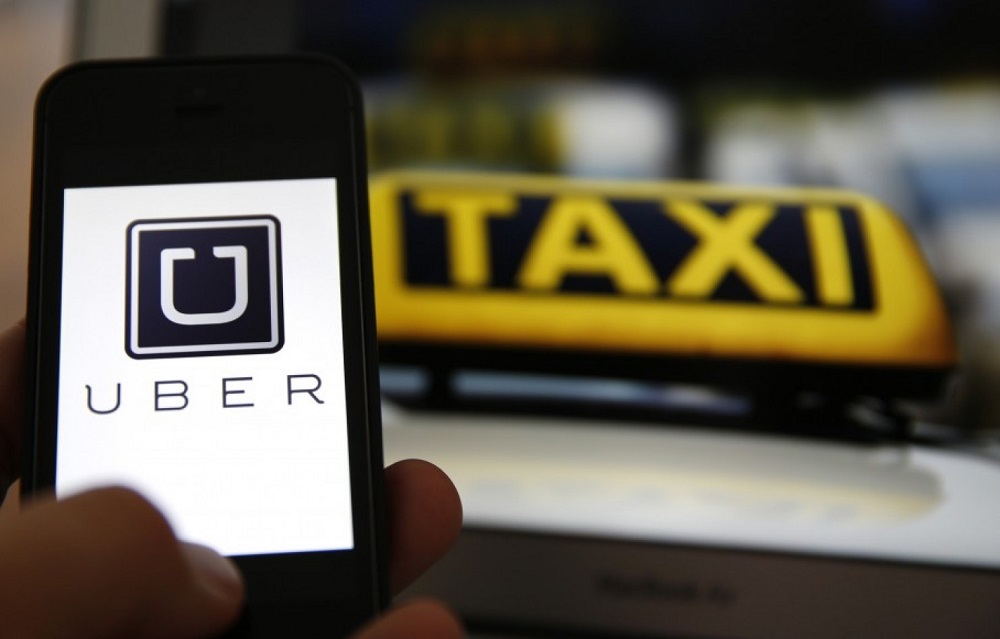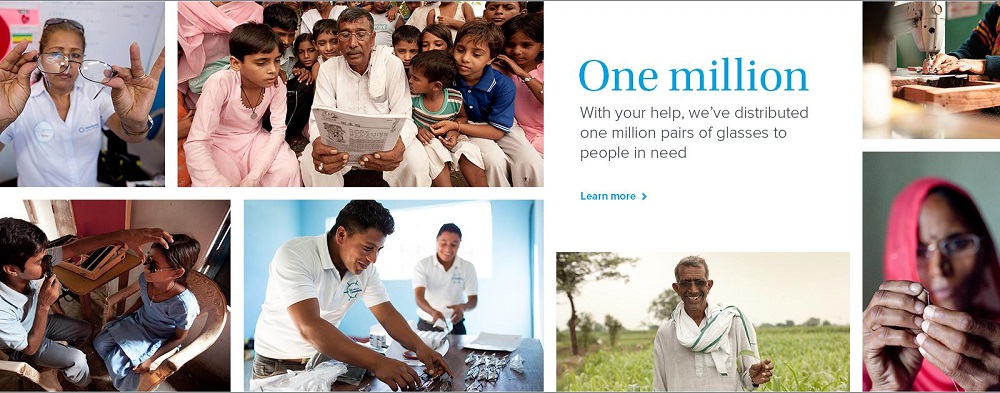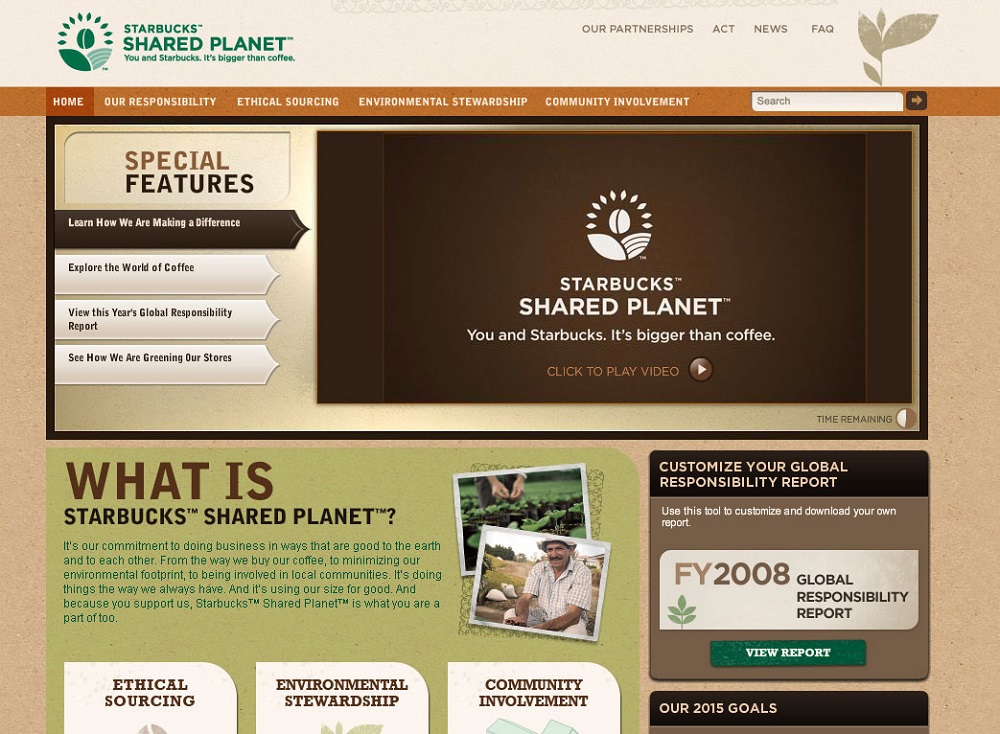
Building brands that are truly meaningful, admired and (sometimes) even loved has not become any easier over the years. If anything, it is becoming increasingly difficult. We’ve never lived in more connected, fast-paced, over-stimulated and challenging times; just ask any marketer and brand manager. And yet – as is typically the case – every challenge brings about an opportunity. Guess what? In this article I will give you three.
On a recent flight from Los Angeles back to New York, I sat next to a 13-year-old kid from somewhere in Oregon. Having had long meetings, a short night and definitely a bit of jetlag, an in-depth conversation was definitely not highest on my wish list for the next six hours. Little did I know that it would turn into one of the best and most insightful conversations I’ve had around brands and branding for a long time. And trust me, I do have many of those.
Kyle was visibly bored with the in-flight entertainment program, so it took about three minutes after take off before he asked me what I was doing in Los Angeles. I told him that I’d been on the West Coast to help a client develop what hopefully turns into a fantastic and very cool brand experience for the company.
“I like some brands. I looooove my Nintendo Wii,” was his short but pretty passionate reply. He immediately followed up with a series of questions:
“So your job is to build brands? How do you do that? Is that difficult?”
Asking a brand strategist how to build a brand is like asking a professional chef how to cook a good dessert. There is no straight answer. It’s a blend of science and art. And sometimes the right amount of each, down to an ounce, can make or break a great brand, as is the case with any delicious dessert.
Kyle was visibly not in the mood for a lecture about the many ingredients it takes – so breaking it down to some simple truths was both a challenge and a fantastic exercise to strip away the theoretical noise that at times keeps us marketers distracted from what ultimately constitutes the brands we fall in love with.
So here are my takeaways – broken down for a 13-year-old.
“So your job is to build brands? How do you do that? Is that difficult?” – Kyle, 13, from Oregon
To get started, let’s look at some of the ground rules that are being rewritten and compel brands to behave differently. Yes, we all know the world is changing – always has, always will. No big news there. But there are some changes we must pay a little more attention to if we intend to continue to build those brands that really matter to people – and successfully create value:
1. Each one of us is an open book
Just take a look around you: Everything you do, everywhere you go, the things you look up online, or the preferences you enter into your social media profile paint a pretty complete and increasingly transparent picture of what ‘your’ brand is all about. You do the math. That turns our world into a place with roughly 7 billion brands. Meaning that organizations have access to more customer (CRM) data than ever before. And that in turn allows them to know us better than we know ourselves, and to fully personalize the experiences we have with them.
2. Work-life separation? A thing of the past
We all work basically 24/7 by now. We might not like it – we might not even want to admit it. But people are ‘consta-preneurs’ these days – always on, always connected. And the more our personal and our work life merge, the stronger grows the sentiment that what we do with our lives needs to have meaning. Brands realize the opportunity that stems from that. By offering something bigger than just products and services, but something that adds significance to our ‘personal brands’, they can become a more integral part of people’s lifestyle.
3. ‘Overstimulation’ is everyone’s middle name
When I started out in advertising more than 10 years ago, I always wondered if stats along the lines of ‘each of us is being exposed to more than 3,000 brand impressions each day’ were actually true. Today, I have no doubt. We should all constantly feel like an 8-year-old in a Toys”R”Us store: Temptation everywhere, each one claiming to be more exciting than the previous one. Brands have long stopped fighting for our attention – they are now fighting for frequent ways to engage with us. Memorable brand experiences that people deem worthy of sharing matter more than ever. Truly winning over a customer today means making him or her the hero of the story you are telling.
In order to successfully navigate this changing landscape, you must focus on what I call the quintessential three P’s. If you get those right, all else will fall into place.

People
Brands evolve around people. It’s the core of their existence, their reason to be. In order to sell anything to anyone, we have to understand what makes people tick – culturally, behaviorally and emotionally. In that context, being customer-centric has always been vital to brands. And today, (luckily) most are.
But really focusing on people takes on new meaning these days.
Demographic data, transactional data, behavioral data, geo-location data, and predictive intelligence: All this data that we (un)willingly give away add to our ‘code halo’ or digital footprint and allow brands to personalize our experience with them.
SEE ALSO: Rebuilding that Emotional Connection with Your Consumers
Let’s use a simple example: Imagine you walk into your local bakery and the saleswoman greets you by name, asking if you’d like the same type of baguette as three weeks ago. Sounds good, right? Now imagine you move on to the local butcher you used to go to quite regularly. Here, no one seems to know who you are; and no one has a clue what you picked out last time. I bet that you’d suddenly be unsatisfied with that experience, simply because your expectations have been recalibrated by the bakery’s personalized shopping experience.
What’s happening is simple: Facebook, Amazon, Netflix, Pandora, Apple and Google are just some of the leading brands that are spurring a behavioral re-education. As you are reading this, an entire generation is learning that brands can (and soon should) know people’s detailed personal preferences – and use those to make each interaction more convenient, more relevant and more fun. No matter which industry you’re in these expectations apply to everyone.
“What we are witnessing is a very significant power shift from the brand to the individual consumer.” – Dominik Prinz
Personalization is not only for the big brands – and it is not a trend. It’s a hurricane that will blow through the executive meeting rooms of every small or large organization, making it the new marketing imperative. What we are witnessing is a very significant power shift from the brand to the individual consumer. And despite the many controversial opinions around ‘Big Data’ and privacy concerns public opinion seems to be shifting: according to a recent study from Responsys, 61% of US consumers feel more positive about a brand when marketing messages are personalized.
Martin Lindstrom summarized it up quite nicely by saying, “in the 80’s, it was all about finding that Unique Selling Proposition (USP), while in the 90’s we were looking for the Emotional Selling Proposition (ESP). Now, we’ve moved on to the MSP – the Me Selling Proposition.”
Let’s look at some brands that excel at understanding the wants and needs of people:
Uber
The ridesharing app took away the hassle and pain of hailing cabs that seem to never be around to begin with. The brand knows exactly where you are, makes the payment process seamless – and allows you to rate and share your personal experience, in real-time.
Neiman Marcus
The luxury department store has piloted a shopping app that recognizes you and your past purchases the moment you walk through the doors of one of their stores. The app immediately directs you to the products you’ll probably find most interesting, and thus creates a very personalized shopping experience.
Disney
The entertainment giant has introduced a digital platform called ‘My Disney Experience’ that allows park visitors to create personal profiles, and can soon be enriched with data gathered via the ‘MyMagic’ wristband that quite literally unlocks the entire theme park experience for you.
At the end of the day, the first of the 3 P’s comes down to this: The better you ‘get’ people, the better you can cater to their needs. And – as in every good relationship – the feeling of being understood and truly cared for is the best prerequisite for a happy, lasting connection with the people your brand serves.
Purpose
One of the key motivators that drives people today is a deep desire for meaning and significance. We are searching for purpose – something that is our contribution to a better world and our very personal legacy.
“Leading a brand without a clear purpose is like driving a car without a sense of direction.” – Dominik Prinz
So, why is that? Fewer of us are still looking for that job that mainly provides a regular paycheck. We crave to do something more with our lives. Many people want to work for a company whose core belief is ‘Do no Evil’ (Google), that believes in a ‘Shared Planet’ (Starbucks) or follows a “Buy one, give one’ business model (TOMS Shoes). Today, ‘purpose’ is as much of a buzzword grabbing hold of boardrooms all over the world as ‘innovation’ has been over the past decade.
And I agree. Leading a brand without a clear purpose is like driving a car without a sense of direction. And the best brands are those that advocate for an important cause and strongly commit to creating impact for both their business and society. Studies conducted by Deloitte, Edelman and Havas Media all point into the same direction: Only 6% of consumers believe the singular purpose of a business is to make money for its shareholders; 90% would boycott a brand if it acted irresponsibly; and 91% of consumers would switch to a brand of a similar price and quality if it supported a relevant cause.
RELATED: Brands Think Like Customers, But Do They Feel Like Them?
Still need more of a sense of urgency? The Meaningful Brands Index pointed out that 73% of all brands could actually disappear and people would not even care. Here are only three examples of brands with a powerful sense of purpose that probably fall into the other 27%:
Warby Parker
The brand’s socially conscious business model has purpose written into its DNA. By buying one of their fashionably designed eyeglasses you’ll automatically provide one pair to someone in urgent need of eyewear. The brand has already distributed more than one million glasses – and thus given many customers not only the chance to support an important cause, but to proudly wear a pair of glasses that tells others “I care.”
Chipotle
Chipotle is the restaurant chain that basically introduced the “food with integrity” concept, which describes the brand’s belief that food should be sourced with respect to animals, the environment and farmers. People seem to love the fact that they can now enjoy their ‘fast food’ burrito while doing good. In the past five years, the organization’s stock price climbed more than 500% and Chipotle now operates more than 1,600 locations.
Patagonia
Chances are good that if you love the outdoors, you’ll love Patagonia. The brand has written an almost unparalleled success story. Being a leading advocate for eco-friendly materials and sustainable manufacturing practices, it takes a broad variety of environmental issues head on, from supply chain transparency to the negative impact of dams on fishing grounds. The brand has earned trust to do so – because it walks the talk. And there are a large number of loyal evangelists now walking alongside Patagonia.
The second ‘P’ shows that brands need to offer something more than the sheer products or services they provide people with. They need to clearly define the higher social purpose they serve and make sure it’s an authentic, credible and proven part of their brand story. It is the emotional tie people can (and increasingly will) identify with.
Participation
Once a strong purpose has been defined, it needs to be more than just broadcasted. That’s what the final ‘P’ is all about: Making it an integral – and quite frankly, exciting – part of the brand experience. Reading to your kids about Disneyland is very different from actually taking them there and seeing their eyes widen with wonder and astonishment when experiencing the magic first hand. Well, guess what? Being able to participate in and to experience a brand’s purpose isn’t all that different.
So, why is participation so increasingly important these days?
It is because content is exploding and constantly fighting for people’s attention. But once you can encourage someone to actively participate in an event, a product innovation, a purpose-driven cause – then we’re talking. That’s when messaging turns into experiencing. And that is so much more powerful and memorable. Remember the old formula (first developed by Edgar Dale in the 40’s) that you’ve heard in school: People remember 10% of what they read, 20% of what they hear, 30% of what they see, 50% of what they see and hear – but 90% of what they do. That’s exactly why participation matters.
SEE ALSO: Branding Roundtable No.5: Brand and Customer Experience
The term ‘Participation Age’ was first coined by John Schwartz, CEO of Sun Microsystems, in 2005. Since then, it has come a long way and is now driving the way brands look at the relationship they build and nourish their audiences. Consumers have long moved on from leaning back and receiving brand messages to leaning forward and actively engaging with them. And today, there is no way we can deny that marketing and branding efforts have shifted from pushed conversations to an ongoing dialogue with an increasingly engaged audience – especially when a meaningful purpose is at the heart of that conversation.
“Brand’s are today’s content brokers. They need to offer more than just a product – but an experience that’s worth sharing.” – Dominik Prinz
People don’t want to just be on the receiving end of the cause a brand is supporting. They want to shape it, influence it, and make it their own. We’re living in a world where brands are content brokers. They are expected to sell us more than a product or service. They also need to offer up content that puts people into a position to share new content with their peers in turn. It is added value at its best.
Three examples of brands that allow people to form part of a purpose-driven experience:
Starbucks
Starbucks states that a ‘Shared Planet’ is a better planet for all of us, and recognizes its responsibility for conducting business in a sustainable way. The brand found ways to include their customers in making that vision a reality; for example, by introducing the simple idea of a reusable cup. Now you have the choice to receive your freshly brewed coffee in either a new cup in the morning or in a cup you only buy once, but bring in every day thereafter. It reduces waste, saves you 10 cents each time – and also makes for a great story that you can share with your peers.
FEED
FEED is a brand that creates products that help feed the world. Every item you buy automatically provides a certain number of meals to people in need. When looking for opportunities to better connect customers to its mission, the brand created FEED Supper – a call to action to host dinners or lunches with friends and family to truly share and appreciate a meal (plus, an experience). This idea not only allowed people to participate in the brand’s effort to change the world, it also gave them a great story to share across social media channels. A classical win-win situation.
AT&T
AT&T has put massive efforts into its It Can Wait initiative over the past years, which raises awareness for the dangers of texting while driving. Going way beyond just ‘broadcasting’ that important message, AT&T took a much more participatory approach. From petition signing and online ‘texting while driving simulators’ to on-campus workshops that educate young drivers on the dangerous consequences, AT&T literally takes this cause to the streets and engages millions of people in a very hands-on manner. And it works. More than 5 million people to date have taken the pledge to not text while driving.
Participation works. It is the ultimate and most deeply effective way to interact with people. Indeed, let’s agree to stop referring to a brand’s audience as consumers, which is one-way and passé, and start calling them participants. This infers that the relationship we build with people needs to be less transaction-focused and more interaction-based. More than semantics, this is a fundamental shift in the way we look at and approach branding and marketing.
So, coming back to Kyle…
“Well,” I said to Kyle, “that’s all part of my job. Three P’s: Understand People; know your Purpose; and create exciting opportunities for Participation. Pretty simple, right?”
Kyle looked at me as if I had just read the Sunday newspaper to him. With a casual “Mm-hmm,” he returned back to dedicating all of his focus to his iPad and playing Candy Crush Saga. He needed to beat his friend’s high score.
“Well,” I thought, “different people choose to participate in different purposes. And that’s good. It’s exciting times for all of us to explore – especially for brands that want to stay relevant and be loved by you, me – and maybe, one day, Kyle.”
Image source: whatmattdoes, The Washington Post, Warby Parker, The Seattle Times

